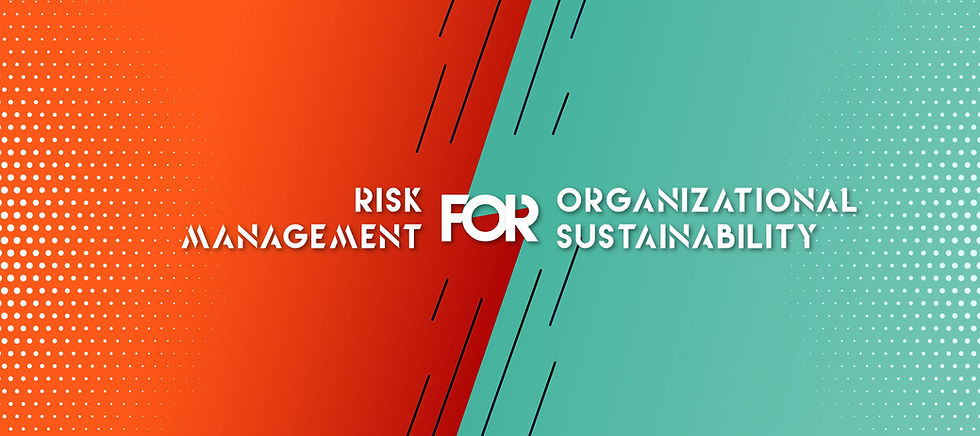Risk Management for Organizational Sustainability
- VCARE Academy
- May 20, 2021
- 2 min read
Updated: Nov 9, 2022

There are many definitions of risk. Most of the definitions focus on hazards, harm, and harmful events. Only one of these definitions is presented from the perspective of an organization. This definition covers not only something that might happen, but also how it will affect an organization’s ability to meet its objectives in an uncertain world. No longer will risk be confined to harmful events.
Instead, risk and its consequences could be positive (i.e. the upside of risk) or negative (downside of risk). Risk is always focused on the organization’s objectives. Opportunities and threats represent the ‘effect of uncertainty. According to the International Organization for Standardization (ISO), this perspective (found in ISO 31000:2018) has been accepted the standard-setting entities in 50 countries representing more than 80% of the world’s population.
Risk is the effect of uncertainty on the ability of an organization to meet its strategic and operational objectives. This definition differs from traditional risk by shifting the emphasis from an event (something happens) to the effect of uncertainty. The effect of uncertainty can help the organization (opportunities) or hinder the organization (threats) from meeting the objectives. In the absence of uncertainty, risk comes from the meeting the execution of effective processes, efficient operations, and efficacious strategy.
After setting the organization’s objectives, organizations must address the internal and external factors that can generate uncertainty. This is accomplished when the organization prepares a scan of the external and internal operating environments. These operating environments are known as the context of the organization.
The objectives are the overarching outcomes that the organization is seeking to achieve. These effects are the highest expression of intent and purpose and typically reflect the organization’s implicit goal instead of the sustainability manager’s “goals.” Organizations establish responsible objectives; however, to achieve them, they must contend with the internal and external context of each operation and of the other organizations that are found in its value chains.
Objectives can have different aspects, such as environmental, well-being, and economic. In some organizations, the objectives mirror the three responsibilities of sustainability. Organizations are expected to seek to balance its efforts to achieve sustainability. It must address interests of the stakeholders, achieve its social license to operate, and address risk!
Dr. Bob Pojasek
Sustainability Legend | ESG Reporting & Disclosures | Uncertainty Risk | Pollution Prevention Expert | Process Improvement | Organizational Sustainability Reporting | Sustainable Procurement Professor
Chairman, Education and Research Executive Board (EREB)
VCARE Academy Inc.
Managing Director
Center for Corporate Performance & Sustainability
📩 rpojasek@sprynet.com

A successful career in supply chain necessitates a never-ending thirst for knowledge and the most up-to-date supply chain skills and knowledge. Even though continuing education and certification programs can take time and money, they help get your specialized knowledge or skills recognized.
When professionals have training that other professionals lack, it distinguishes them and sets them apart from the crowd. Certification and master classes show that the professionals are committed to learning, excelling, and using best practices.

Featured Certification Programs
Certified Stores and Stock Controller (CSSC)
Certified Production and Inventory Analyst (CPIA)
Featured Mini-Master Classes
Supply Chain Framework and Strategy
Collaboration among Sustainability, Procurement and Supply Chain
Implementing 3PL and 4PL Strategies in the Value Chain
Supply Chain Sustainability with Circularity to Drive Profitability
Comments